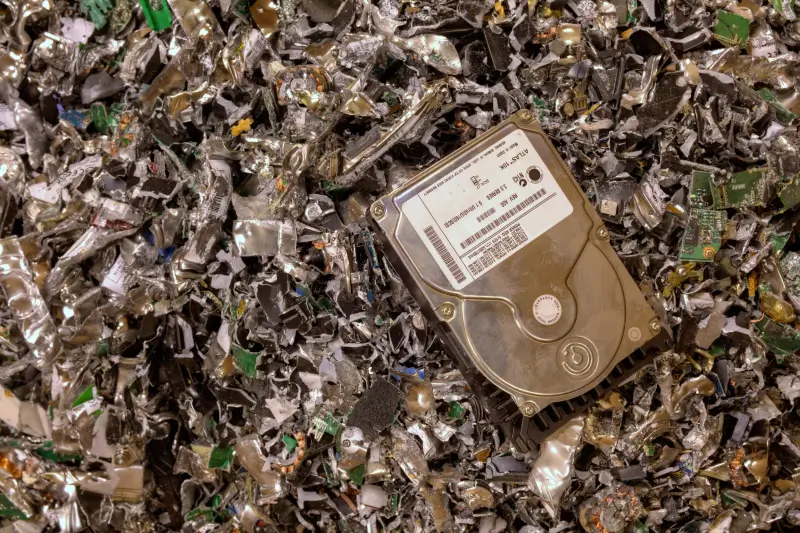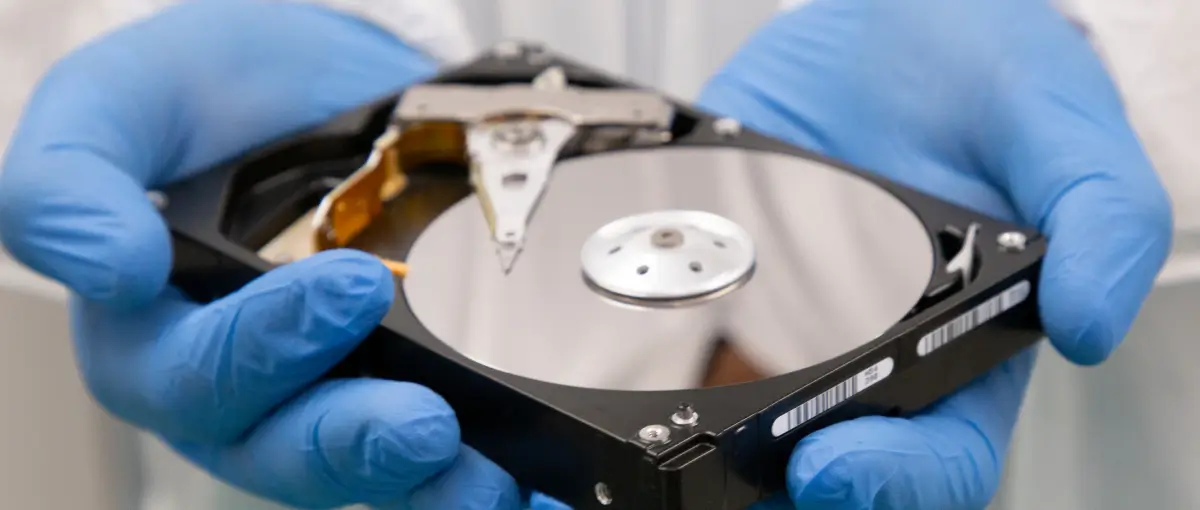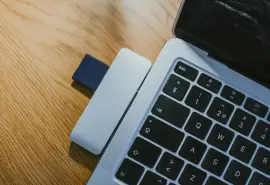Destroying old hard drives has never been more essential given the value of sensitive data. IBM estimates that the global average cost of a data breach reached $4.4 million in 2025. Yet, Secure Data Recovery engineers retrieved over 6 million files from hard drives listed as refurbished recently.
These figures underscore the need for hard drive disposal methods that people can trust.
Below, our experts explain how to dispose of hard drives with four effective techniques.
Key Takeaways:
- Hard drive disposal prevents confidential data from being exposed by destroying the device or clearing its contents.
- The ideal destruction method depends on the storage medium, presence of sensitive data, compliance requirements, and cost concerns.
- You can use multiple techniques to reduce the odds of a data breach.
- Experts know how to destroy a hard drive beyond repair and impede data recovery efforts.
Hard Drive Disposal

Hard drive disposal is the process of permanently destroying data stored on a hard disk drive (HDD) through physical damage or secure erasure.
The best practice to dispose of hard drives depends on the situation. Public institutions, large corporations, and small businesses storing classified documents, financial records, or personal data require comprehensive solutions. Home users might opt for a more practical approach that still gets the job done.
Regardless, proper hard drive disposal should remain a top priority for anyone looking to replace a storage device.
How To Dispose of Old Hard Drives
The following methods are the most reliable methods to dispose of old hard drives. Many people choose to combine methods to increase the likelihood of total data destruction.
Method 1: Shredding

Shredding is the act of destroying a hard drive by cutting or crushing it in an industrial shredder.
The process makes data recovery impossible by tearing components and magnetic platters where data resides into tiny pieces. Even motivated parties cannot reassemble the drive’s scraps to obtain private data. As a result, entities with strict data protection standards often choose it. Common examples include government agencies, legal firms, financial services, and healthcare providers.
However, the destruction of the entire hard drive means that reusing or selling the device is not possible. This fact leads some organizations to consider other options than shredding.
Method 2: Degaussing
Degaussing is the act of using a strong magnetic field to wipe data stored on the hard drive’s platters.
A degausser is hardware designed to demagnetize the platter surface. The unique tool disrupts the disk’s magnetic field by producing a powerful one of its own. Without magnetic domains, the hard drive loses all data contained on the platters, including the firmware that controls the storage process.
While degaussing does not shred or crush the disk, it does still render the device unusable.
Method 3: Drilling

Drilling is the act of punching holes through multiple locations on the platters to damage the storage media.
Puncturing the platter with a drill press or power tool is a quick, low-cost method of data destruction. The severe physical damage destroys data across large regions of the platter and stops the disk from spinning. Drilling is a suitable alternative to enterprise solutions like shredding or degaussing.
Caution: Take safety measures and wear protective equipment when using power tools. Doing so could prevent metal shards from scratching your eyes and skin.
Method 4: Sanitizing
Sanitizing is the process of permanently erasing data to ensure no one can recover data from the device.
The process differs depending on the sanitization technique. Secure erasure involves specialized software that instructs the hard drive’s controller to purge all user data. It even clears data stored in free space and hidden sectors. Overwriting often makes several passes across the platter to replace data with random bit patterns. However, this technique does not always remove residual data. Consider a more secure method for the most sensitive files.
Unlike physical destruction, a logical approach allows people to reuse or resell their hard drive. Thoroughly sanitize the disk before sending the device to someone else.
How To Destroy SSD
Solid-state drives (SSDs) are slightly different types of hard drives. Instead of magnetic platters, SSDs store data by trapping electric charges in memory cells. Therefore, degaussing is useless on SSDs and overwriting has limited effectiveness compared to HDDs. Drilling needs to shatter the memory cells and disable the controller on the printed circuit board (PCB) to destroy data.
Like destroying old cell phones, shredding and secure erasure are the best ways to dispose of SSDs. Both methods offer a high degree of security to businesses, content creators, and home users.
Hard Drive Disposal Service
As a leader in data recovery services, our team knows what it takes to retrieve lost files. We also know what goes into data destruction to eliminate any chance of recovery. Our hard drive disposal service follows NIST guidelines and provides peace of mind to parties who need personal or private data destroyed. Once finished, we issue a certificate of destruction. It is all part of a proven process that you can trust.
Call 800-388-1266 or request help if you need assistance disposing of an old hard drive.








